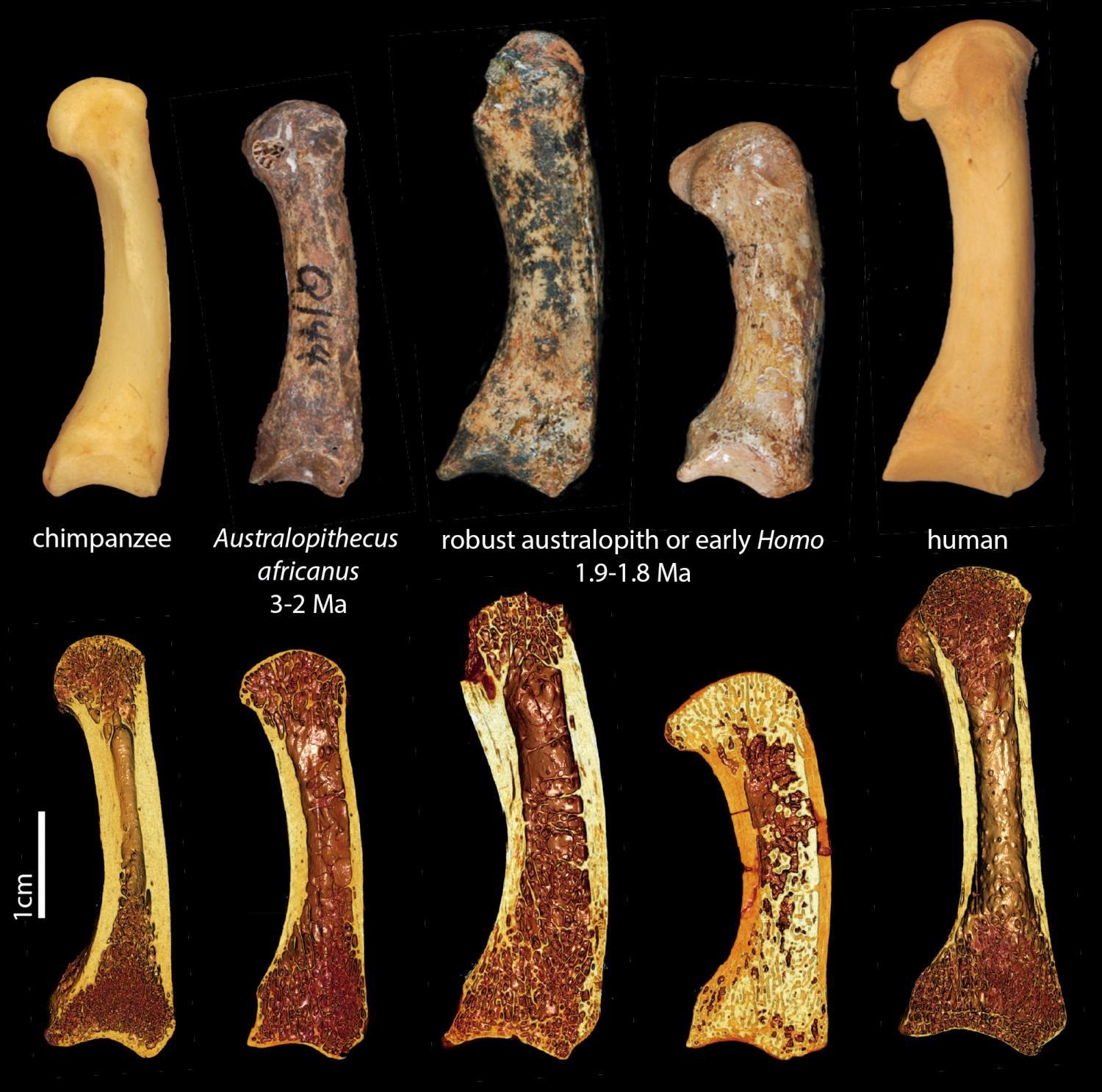
New research suggests pre-Homo human ancestral species, such as Australopithecus africanus, used human-like hand postures much earlier than was previously thought.
Anthropologists from the University of Kent, working with researchers from University College London, the Max Planck Institute for Evolutionary Anthropology in Leipzig (Germany) and the Vienna University of Technology (Austria), have produced the first research findings to support archaeological evidence for stone tool use among fossil australopiths 3-2 million years ago.
The distinctly human ability for forceful precision (e.g. when turning a key) and power “squeeze” gripping (e.g. when using a hammer) is linked to two key evolutionary transitions in hand use: a reduction in arboreal climbing and the manufacture and use of stone tools. However, it is unclear when these locomotory and manipulative transitions occurred.
Dr Matthew Skinner, Senior Lecturer in Biological Anthropology and Dr Tracy Kivell, Reader in Biological Anthropology, both of Kent’s School of Anthropology and Conservation, used new techniques to reveal how fossil species were using their hands by examining the internal spongey structure of bone called trabeculae. Trabecular bone remodels quickly during life and can reflect the actual behaviour of individuals in their lifetime.
The researchers first examined the trabeculae of hand bones of humans and chimpanzees. They found clear differences between humans, who have a unique ability for forceful precision gripping between thumb and fingers, and chimpanzees, who cannot adopt human-like postures. This unique human pattern is present in known non-arboreal and stone tool-making fossil human species, such as Neanderthals.
The research, titled “Human-like hand use in Australopithecus africanus, shows that Australopithecus africanus,” a 3-2 million-year-old species from South Africa traditionally considered not to have engaged in habitual tool manufacture, has a human-like trabecular bone pattern in the bones of the thumb and palm (the metacarpals) consistent with forceful opposition of the thumb and fingers typically adopted during tool use.
These results support previously published archaeological evidence for stone tool use in australopiths and provide skeletal evidence that our early ancestors used human-like hand postures much earlier and more frequently than previously considered.
Reference:
M. M. Skinner, N. B. Stephens, Z. J. Tsegai, A. C. Foote, N. H. Nguyen, T. Gross, D. H. Pahr, J.-J. Hublin, T. L. Kivell. Human-like hand use in Australopithecus africanus. Science, 2015; 347 (6220): 395 DOI: 10.1126/science.1261735
Note: The above story is based on materials provided by University of Kent.










